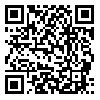BibTeX | RIS | EndNote | Medlars | ProCite | Reference Manager | RefWorks
Send citation to:
URL: http://jha.iums.ac.ir/article-1-981-en.html
Introduction: co-authorship network is composed of nodes and links. Social network analysis is utilized to detect patterns among these links. The purpose of this paper was to visualize co-authorship network of emergency medicine in 2001 - 2011.
Methods: The present research focused on the social network analysis cluster . Data were downloaded from web of science according to subject and author searching. To determine citation patterns, we used two indicators named “Impact factor” and “number of citations”. Analysis of data was performed by using Histcite, the Pajek and Bibexcel software.
Results: The results showed the ascending trend of emergency medicine papers between 2009 and 2011. The greatest international collaboration was in 2011with seven papers. There were 37 articles in 2011 and 84 citations in 2007. Co-authorship network of emergency medicine composed of seven clusters, while Co-authorship network of its specialists included 11 clusters.
Discussion: E mergency medicine is an interdisciplinary field requiring the collaboration and knowledge sharing of emergency specialists with other researchers to play a major role in the improvement of this field.
Received: 2012/02/6 | Accepted: 2013/05/1 | Published: 2013/05/1
| Rights and permissions | |
 |
This work is licensed under a Creative Commons Attribution-NonCommercial 4.0 International License. |





